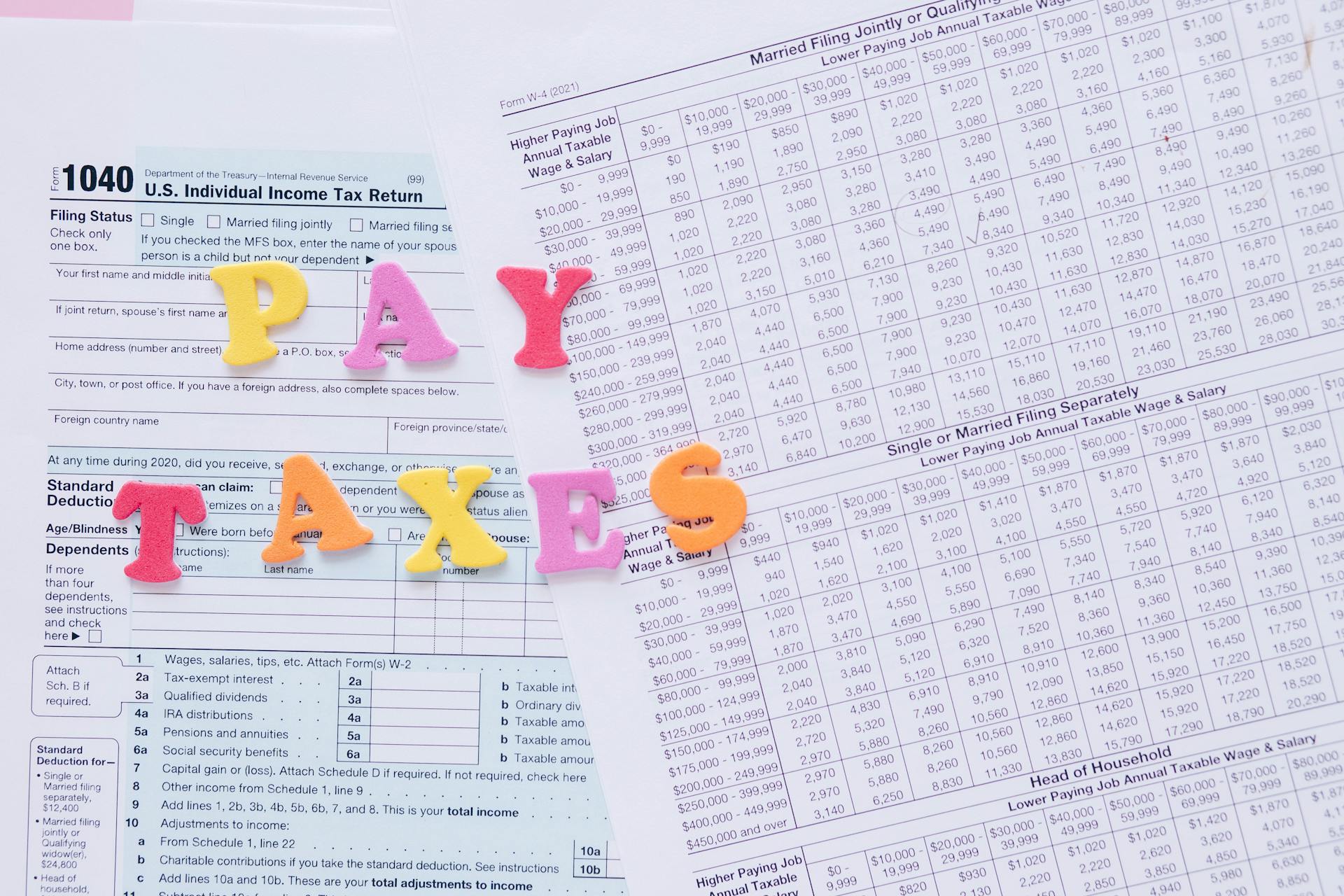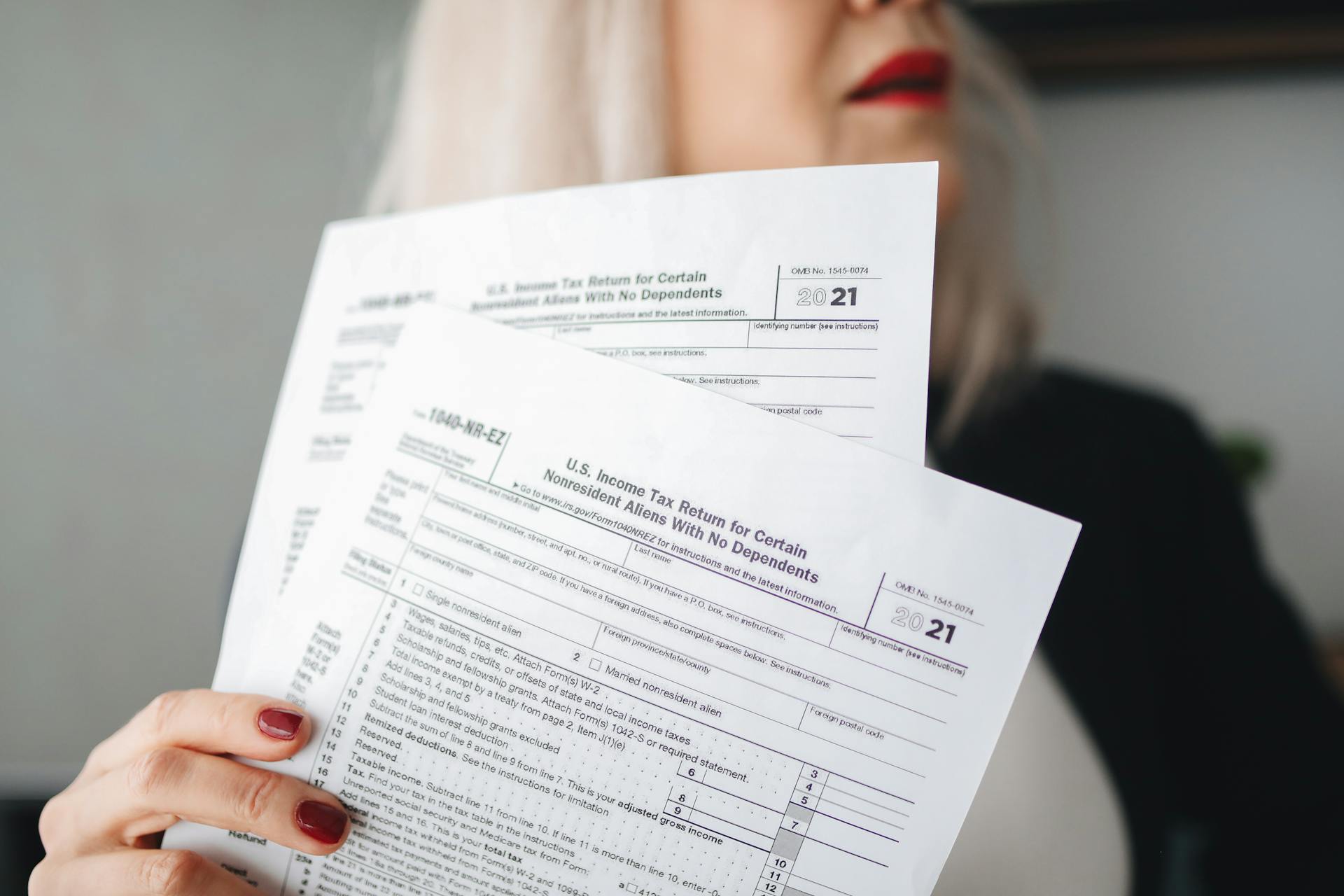
Deferred tax uncertainty is a complex topic in accounting, but it's essential to understand its basics.
The concept of deferred tax arises from temporary differences between financial reporting and tax reporting.
Temporary differences can be due to various factors, such as depreciation methods, inventory valuation, or revenue recognition.
These differences result in deferred tax assets or liabilities, which are recognized on the balance sheet.
A deferred tax asset is created when a company expects to pay less tax than the amount reported in its financial statements, while a deferred tax liability is created when a company expects to pay more tax.
According to the article, the deferred tax asset or liability is adjusted each period based on the change in the temporary difference.
See what others are reading: When Are Deferred Taxes Due
What's the Issue?
External events like geopolitical unrest, natural disasters, and inflationary pressures can cause economic uncertainty and unprecedented challenges for companies.
Companies' operations can be severely impacted by these external events, making it difficult to predict future taxable profits.

Economic uncertainty can be caused by a range of factors, including climate effects and government measures introduced to help companies navigate these challenges.
Government measures, such as specific tax policies, can directly affect a company's projections of future taxable profits.
Companies need to consider the effect of these changes on their recognition of deferred tax assets under IFRS Accounting Standards.
Uncertain Tax Positions
Uncertain tax positions can be a major source of deferred tax uncertainty. A tax position is considered uncertain if there's a 50% or less chance it would hold up if challenged by tax authorities.
Examples of uncertain tax positions include uncertainty about the deductibility of a given amount, uncertainty as to whether tax authorities will accept a particular transfer pricing methodology, and establishing whether a tax return should be filed in another state.
Entities with uncertain tax positions may raise a red flag among tax authorities, who could question the validity of the tax position taken on previously filed income tax returns. A large number of uncertain tax positions can also trigger an audit with the IRS.

Entities must apply the "more-likely-than-not" threshold to classify tax positions as uncertain or routine business transactions. This involves a multi-step process including inventorying all tax positions, applying the MLTN threshold, and deciding how to account for uncertain tax benefits.
Here are some examples of uncertain tax positions:
- Uncertainty about the deductibility of a given amount.
- Uncertainty as to whether tax authorities will accept a particular transfer pricing methodology.
- Establishing whether a tax return should be filed in another state.
Getting Into Details
When assessing the recoverability of a deferred tax asset, a company considers the availability of qualifying taxable temporary differences, and then the probability of other future taxable profits and tax planning opportunities.
A company can still recognize a deferred tax asset even if it's loss-making, as long as it has sufficient qualifying taxable temporary differences to meet the recognition test.
External events that trigger economic uncertainty can affect a company's projections of future taxable profits. Changes in forecast cash flows, tax strategies, and income tax law can all impact a company's ability to recognize a deferred tax asset.
Some external events may reduce future taxable profits, while others may increase them. For example, a government's measures in response to a natural disaster may impact the timing of the reversal of temporary differences.
Here's an interesting read: Future Taxable Amounts Result in Deferred Tax Assets.

A company needs to reflect expectations at the reporting date and use assumptions that are consistent with those used for other recoverability assessments, such as impairment of non-financial assets.
If the recognition threshold is met, a company recognizes a deferred tax asset and measures it using the tax rate expected to apply when the underlying asset is recovered based on rates that are enacted or substantively enacted at the reporting date.
For your interest: Reporting Period in Accounting
Uncertain Tax Positions and Estimates
Uncertain tax positions can be tricky to navigate, but understanding the basics can help you stay on track. A tax position is considered uncertain if there's a 50% or less chance it would hold up if challenged by tax authorities.
The ASC 740 standard requires organizations to inventory all tax positions for the current year and open years for all jurisdictions. This involves applying the "more-likely-than-not" (MLTN) threshold, which means classifying tax positions as uncertain or routine business transactions.

Uncertainty about the deductibility of a given amount is just one example of an uncertain tax position. This can happen when there's a question about whether a particular expense is deductible.
If an entity has many uncertain tax positions, it can raise a red flag among tax authorities. This could lead to an audit with the IRS, which can be a headache to deal with.
Examples of uncertain tax positions include uncertainty about the deductibility of a given amount, uncertainty as to whether tax authorities will accept a particular transfer pricing methodology, and establishing whether a tax return should be filed in another state.
ASC 740 Requirements
ASC 740 Requirements are crucial for maintaining the accuracy of income tax accounting in financial statements. This ensures that shareholders, investors, and business partners have reliable information to assess corporate performance.
ASC 740 requires companies to account for and record income taxes accurately, which is vital for maintaining investor confidence and shareholder value.
Any inaccuracy in ASC 740 can lead to material weaknesses and financial restatements, resulting in costly expenses for the business.
Here's an interesting read: Asc 842 Cash Flow Statement
Accounting for Tax Positions

Accounting for Tax Positions is a crucial aspect of managing deferred tax uncertainty. According to ASC 740, a tax position is considered uncertain if there's a 50% or less chance it would hold up if challenged by tax authorities.
The framework for determining and handling uncertain tax positions involves a multi-step process, which starts by inventorying all tax positions for the current year and all open years for all jurisdictions. This process can be complex and time-consuming, especially for entities with many uncertain tax positions.
To classify tax positions as uncertain or routine business transactions, the "more-likely-than-not" (MLTN) threshold of 50% is applied. Tax positions that fail to meet this standard are considered uncertain.
Examples of uncertain tax positions include uncertainty about the deductibility of a given amount, uncertainty as to whether tax authorities will accept a particular transfer pricing methodology, and establishing whether a tax return should be filed in another state.

Entities with many uncertain tax positions may raise a red flag among tax authorities, who could question the validity of the tax position taken on previously filed income tax returns. A large number of uncertain tax positions can also trigger an audit with the IRS.
If an entity is found at fault and loses the challenge imposed by tax authorities, it could result in an elimination of deductions or an uptick in previously reported taxable income, decreasing net income reflected on the financial statements.
Tax positions are considered uncertain if there's a 50% or less chance they would hold up if challenged by tax authorities, as per ASC 740.
Global Considerations
Deferred tax uncertainty can be particularly challenging for multinational companies with operations in countries with different tax laws and regulations.
The use of the "matching principle" in accounting can exacerbate the issue, as it requires companies to match the recognition of revenue with the related expenses, including tax expenses.
Intriguing read: Can I Write off Business Expenses on My Personal Taxes

In some countries, like the United States, the tax authority has the power to adjust a company's tax liability even if the company has already recorded a deferred tax asset or liability.
The International Financial Reporting Standards (IFRS) also address deferred tax uncertainty, but the approach can vary depending on the specific standard being applied.
The complexity of deferred tax uncertainty can lead to significant financial reporting errors, which can have serious consequences for companies.
In some jurisdictions, companies may be required to disclose deferred tax uncertainty in their financial statements, which can impact their credit rating and investor confidence.
Curious to learn more? Check out: The Direct Method of Reporting Operating Cash Flows
Asset Recognition
Asset recognition is a crucial aspect of deferred tax uncertainty. The uncertainty of tax rates and regulations can make it challenging to accurately estimate deferred tax assets.
Deferred tax assets can arise from temporary differences between financial reporting and tax accounting. For instance, depreciation methods may differ between financial statements and tax returns.
You might enjoy: Deferred Tax Asset Definition

The amount of deferred tax assets can fluctuate significantly over time due to changes in tax laws and rates. This uncertainty can lead to a mismatch between the financial reporting and tax accounting of a company.
A company's ability to utilize deferred tax assets depends on its taxable income. If a company has a high taxable income, it can use more of its deferred tax assets to reduce its tax liability.
The uncertainty of deferred tax assets can impact a company's financial statements and cash flow. It's essential for companies to regularly review and update their deferred tax estimates to ensure accuracy.
A fresh viewpoint: Are Insurance Proceeds for Business Property Damage Taxable
Summary
The introduction of BEPS 2.0's GloBE rules will affect MNEs with revenues of at least EUR 750 million, marking a significant shift in global taxation.
These new rules set a 15% Global Minimum Tax, which could lead to unexpected "top-up tax" liabilities due to nuanced rules and intricate calculations.

Many countries are legislating these rules into local law, effective in 2024, making it crucial for MNEs to act now and assess the impact of these new rules and local laws.
The new tax framework may even impact MNEs with effective tax rates above the 15% minimum rate, making compliance a challenging task.
Tax accounting teams need to prepare for the implementation of BEPS 2.0, which is due to come into force in late 2023/early 2024, specifically for Pillar Two rules on global minimum taxation.
See what others are reading: 1031 Exchange New Construction
Frequently Asked Questions
What causes DTL to increase?
A growing deferred tax liability (DTL) often occurs when a company invests in new capital assets, which can lead to increased tax deductions and a larger DTL. This is typically seen in capital-intensive industries where new assets are frequently purchased.
Sources
- https://kpmg.com/xx/en/our-insights/ifrg/2024/frut-assets-1c.html
- https://accountsexamples.com/uncertain-tax-positions-significant-judgements-estimates-quantification-of-amounts/
- https://www.oreilly.com/library/view/accounting-for-deferred/9781119724568/c04.xhtml
- https://www.ey.com/en_no/insights/tax/why-a-15-percent-financial-statement-tax-rate-may-not-avoid-global-minimum-tax
- https://tax.thomsonreuters.com/en/glossary/asc-740
Featured Images: pexels.com

